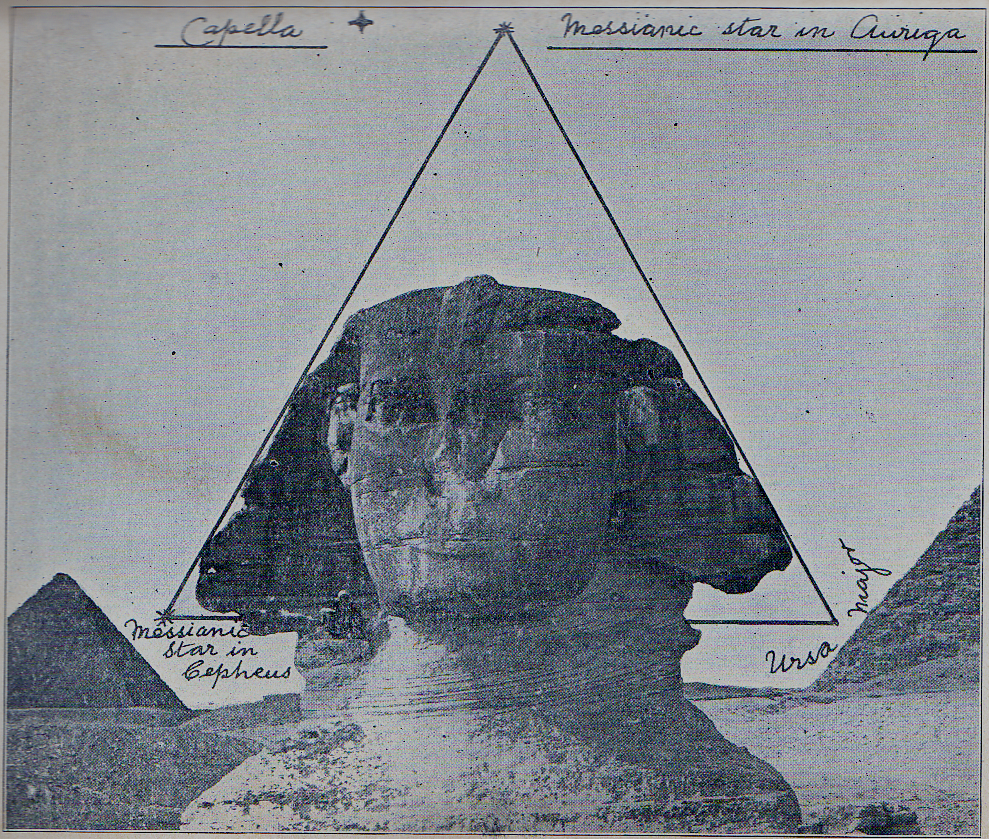|
Sphinx.
Built by the Hiddekelic Race 13,465 B.C. to 12,098 B.C.
|
|
"Capricornus, which is frequently represented by a goat's head and body, with a fish's tail, becomes apportioned to the 1st division of the Pisonic age, in the beginning of which the Pale race (4th Adam) was created. But inasmuch as this division overlapped the Gihonic age, and as, with the exception of the escaping remnant, the people were swept away in the cataclysm that destroyed the Gihonic race, so Capricornus as symbolic of the Flood, and of the overlap of the Gihonic and Pisonic ages, is represented as an amphibion. After Capricornus comes Sagittarius, in which the Bread of Life was brought forth by Melchizedek, and hence, becomes the Epoch of Replenishment. After Sagittarius comes Scorpio, the epoch in which, as already set forth, Messiah, the Living Bread, fulfilled the will of God in his missions as Subjugator and Redeemer. After Scorpio comes Libra, in which all hosts are brought to judgment; beginning with Christ, the Messiah, continuing with Satan, and ending with Lucifer, the angel Death. With the second advent of Virgo, the Thousand Years' Era is ushered in, when a new year begins. After Virgo, Leo reappears. With Leo Time ends, when Messiah, the Lion of the tribe of Judah, returned to the Father, enters upon his eternal reign of triumph." Now, from reading the above, the original face of the "Sphinx" was altered to look as it does today. "The one-metre-wide nose on the face is missing; Despite the hard quality of the stone of the head, the face is badly damaged, and not only by natural erosion; There is an historical account from the 15th century that says that in 1378, a Sufi Muslim leader named Muhammad Sa’im al-Dahr destroyed the nose out of anger when he saw people practicing idolatry to the Sphinx. In addition to the lost nose, a ceremonial pharaonic beard is thought to have been attached, although this may have been added in later periods after the original construction. Egyptologist Vassil Dobrev has suggested that had the beard been an original part of the Sphinx, it would have damaged the chin of the statue upon falling. The lack of visible damage supports his theory that the beard was a later addition; Pieces of the Sphinx’s massive beard found by excavation adorn the British Museum in London and the Cairo Museum." unnamed source Do you understand "who", out of all the possibilities, be the original face, was to portray? While the image above was created in Photoshop located here, that author took the image of "Khafra" as an example to reconstruct the face of the Sphinx. The "true" identity is none other than... |
|
~ Messiah ~
"The sphinx merely entices seekers of the
truth to attempt to solve this age old stellar puzzle. For over twelve
thousand years it has lain waiting to be solved only now to have been
revealed to humanity."
Paul LaViolette from
http://etheric.com/the-zodiac-cipher/ //∞\\ |


.png)